Understanding Test and Tag Regulations for Solar Installations
Solar power systems, a leading force in the renewable energy sector, have dramatically changed the way we harness and utilise solar energy. These complex systems, made up of solar panels, inverters, and often battery storage, are increasingly common in both residential and commercial settings. However, with the adoption of such technology comes the responsibility of ensuring their safety and efficiency. This is where the concept of test and tag becomes crucial, especially in the context of solar installations.
Test and tag is a process that involves inspecting, testing, and marking electrical equipment to confirm it meets safety standards. While commonly associated with general electrical appliances, its relevance is equally significant in solar power. Adhering to test and tag regulations is not just a matter of compliance; it’s a commitment to safety and the optimal operation of solar installations.
This blog post will delve into the intricacies of test and tag regulations specifically tailored for solar installations. From understanding the basic components and working principles of solar systems to exploring the regulatory standards, testing procedures, and the benefits of compliance, we aim to provide a comprehensive guide. Whether you are a solar system owner, installer, or simply a renewable energy enthusiast, understanding these regulations is key to ensuring solar technology’s safe and efficient use. Let’s embark on this enlightening journey to better grasp the importance of test and tag in the solar industry.
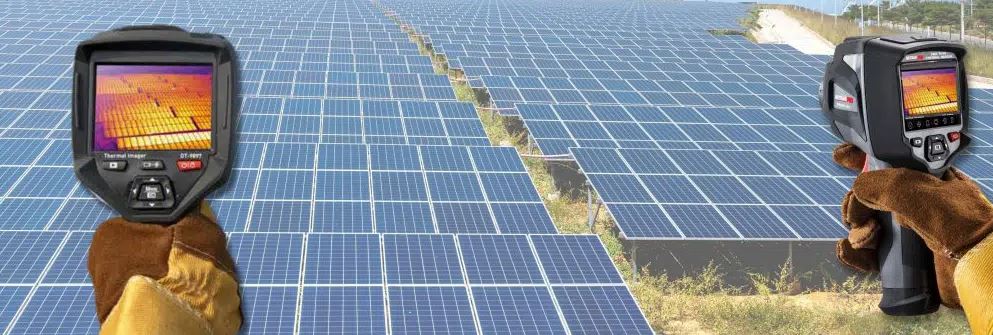
Understanding Solar Installations
Solar energy systems, an epitome of renewable energy technology, are complex yet fascinating in their design and functionality. At the heart of these systems lie the solar panels, crucial for capturing sunlight and transforming it into electrical energy. These panels consist of photovoltaic (PV) cells, which utilise the photovoltaic effect to convert sunlight directly into electricity.
Next, inverters play a crucial role in transforming the direct current (DC) generated by solar panels into alternating current (AC), the form of electricity that powers our homes and businesses. Inverters are the brain of the solar power system, ensuring that the energy produced is compatible with the grid and the appliances within the premises.
For systems designed to store energy, battery storage is an essential component. These batteries store excess energy generated during sunny periods, which can be used during low sunlight, like at night or on cloudy days. This storage capability enhances the solar system’s efficiency and ensures a continuous power supply.
Lastly, the wiring and electrical connections form the vascular system of solar installations. They connect the solar panels, inverter, and batteries (if present) to the electrical grid and the building’s internal power system. Proper installation and maintenance of these components are vital for the safe and efficient operation of the solar system.
The basic working principle of solar installations revolves around converting sunlight into electricity. When sunlight hits the PV cells in solar panels, it creates an electrical field across the layers of the cell, causing electricity to flow. The inverter converts This generated DC electricity into AC, making it usable for commercial and residential needs. The process is a clean and sustainable way to generate power, reducing reliance on fossil fuels and decreasing carbon footprints.
What is Test and Tag?
Test and tag is a safety procedure where electrical appliances are thoroughly inspected and tested for electrical safety. This process involves two key steps: first, a visual inspection to identify any damage, followed by electrical testing using specialised equipment to ensure the appliance is safe. Once an appliance passes these tests, it is tagged with a label indicating the date of the test and the next due date for testing. This process is crucial in identifying and mitigating electrical hazards, preventing accidents and ensuring the safety of users.
The test and tag concept originated as a safety measure in industries where electrical appliances are prone to wear and tear, increasing safety risks. Over time, this practice was formalised into regulations and standards, making it a mandatory procedure in certain sectors and regions. The evolution of these regulations reflects a growing awareness of the importance of electrical safety and the need for regular maintenance and inspection.
In the context of solar installations, test and tag is particularly relevant given the electrical nature and outdoor placement of solar panels and associated equipment. Exposure to weather elements, the potential for wear and tear, and the risks associated with electrical systems make it imperative for these installations to undergo regular testing and tagging. This ensures not only the safety of the system but also its efficiency and longevity.
Regulations and Standards
Several national and international standards govern the test and tag process. These standards provide:
- Guidelines on how testing should be conducted.
- The frequency of tests.
- The qualifications required to perform these tests.
For instance, standards such as the IEC 62446 outline requirements for testing, documenting, and maintaining grid-connected photovoltaic systems.
For solar installations, the Gold Coast test and tag requirements may include specific tests for PV modules, inverters, and other system electrical components. These requirements are often more stringent due to the high voltage and power levels involved in solar systems and their exposure to environmental factors.
The frequency of test and tag for solar installations varies based on jurisdiction and the specific type of equipment. Generally, it is recommended that solar systems be tested and tagged at regular intervals – for example, annually – to ensure ongoing safety and performance. Compliance with these periodicity requirements is crucial for legal and insurance purposes and for the integrity of the solar installation.
Testing Process and Procedures
Types of Tests Conducted
- Visual Inspections: This is the first step in the test and tag process, where a technician visually examines the solar installation for signs of damage, wear, or environmental impact.
- Electrical Safety Tests: These tests involve checking the electrical components’ insulation resistance, earth continuity, and polarity to ensure they operate safely and effectively.
- Performance Efficiency Tests: These tests assess the performance of the solar panels and the overall system to ensure they operate optimally.
Once a solar installation passes all the necessary tests, it is ‘tagged’ with a label that records the testing date, the outcome, and when the next test is due. This tag serves as a record of compliance and maintenance.
Accurate documentation and record keeping are essential to the test and tag process. Records should include details of the inspection, test results, and any repairs or maintenance performed. This documentation is vital for tracking the equipment’s history and demonstrating compliance with safety standards.
In conclusion, the test and tag process is critical to maintaining solar installations. Owners and operators can ensure their installations are safe, compliant, and efficient by understanding the components, working principles, regulations, and testing procedures associated with solar systems. As solar technology continues to evolve, adhering to these standards will play a crucial role in the sustainable expansion of renewable energy solutions.
Benefits of Compliance
The foremost benefit of complying with test and tag regulations for solar installations is enhanced safety. Regular testing and tagging help identify potential electrical hazards before they lead to accidents or malfunctions. This proactive approach safeguards the property and protects individuals from electrical shocks, fires, and other risks associated with faulty solar installations.
Compliance with testing and tagging regulations directly impacts the longevity and efficiency of solar installations. Regular maintenance checks ensure that all solar system components are functioning optimally. This extends the installation’s life and ensures it operates at peak efficiency, thus maximising the return on investment over time.
Adhering to test and tag regulations is often a legal requirement. Non-compliance can lead to penalties and legal liabilities and can also invalidate insurance claims. Regular testing and tagging demonstrate due diligence and compliance with safety standards, which is crucial for insurance purposes and in meeting regulatory obligations.
Common Challenges and Solutions
Common issues leading to non-compliance include lack of regular maintenance, using uncertified or unskilled personnel for testing, and inadequate documentation. Ignorance of the latest regulations and standards can also lead to non-compliance.
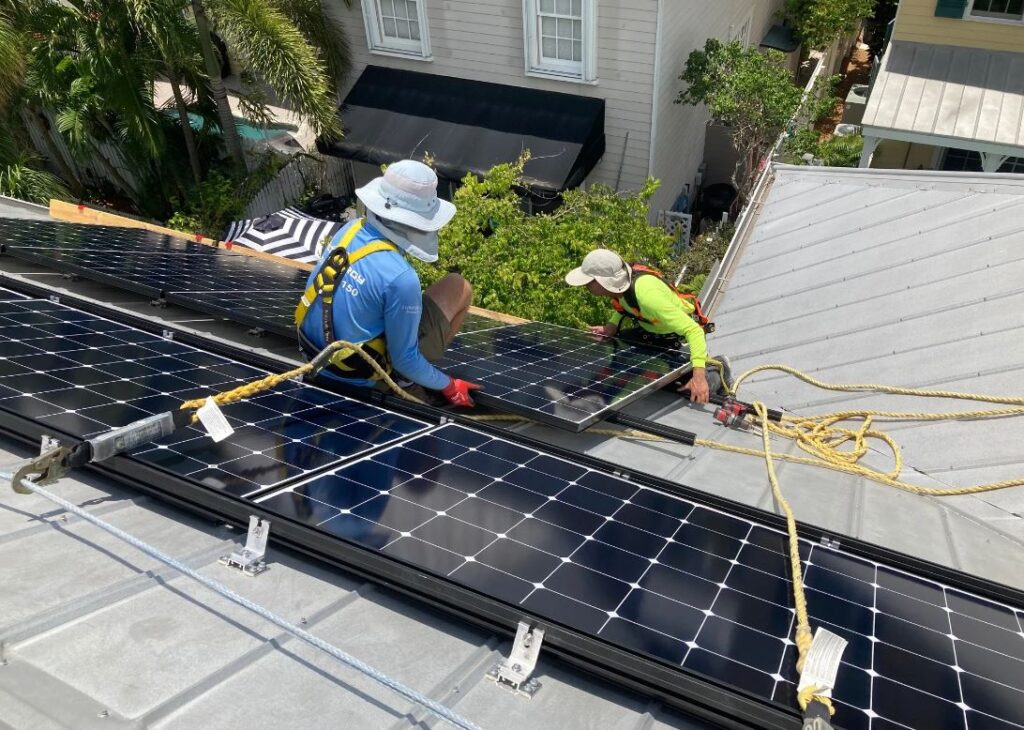
To ensure ongoing compliance, it’s essential to establish and stick to a regular maintenance schedule. Hiring certified professionals for testing and tagging and staying informed about the latest regulations and standards are key strategies. Implementing a robust documentation system for record-keeping is equally important.
Professional services play a pivotal role in maintaining compliance. Professionals with certification possess the expertise to detect and resolve problems that might go unnoticed by those without specialised training. Moreover, professional certifications ensure that the personnel handling the installations are up-to-date with the latest safety standards and practices.
Future of Test and Tag in Solar Technology
The future of test and tag in solar technology looks promising with the advent of new technologies and innovations. Automated testing systems, advanced diagnostic tools, and smart monitoring systems are emerging technologies that can make the test and tag process more efficient and reliable.
As solar technology evolves, regulations are also expected to change to accommodate innovations and address emerging challenges. These changes may include updated safety standards, new testing methods, and revised compliance requirements to ensure the highest level of safety and efficiency.
Test and tag processes will continue to play a crucial role in the future of sustainable energy. By ensuring the safety and efficiency of solar installations, these processes promote the adoption of renewable energy and contribute to the reliability and stability of the energy grid.
In summary, understanding and complying with test and tag regulations is essential for solar installations’ safety, efficiency, and longevity. The benefits of compliance extend beyond mere adherence to legal requirements, contributing significantly to the operational success of solar energy systems. As solar technology advances, staying informed about and adhering to these regulations becomes even more crucial.
This blog post underscores the importance of regular maintenance, the role of professional services, and future developments in solar energy. We encourage readers to engage with certified professionals for their solar installation needs and to stay informed about the latest test and tag regulations to ensure their solar installations are safe, efficient, and compliant.
Australia’s Solar Boom: How Solar Electricity is Reshaping the Energy Market
As the sun shines bright on the world’s largest island nation, Australia, it’s reshaping the country’s energy market landscape. The increasing adoption of solar energy and the consequential boom in the solar industry has become an agent of transformation, stirring a renewable energy revolution and accelerating the decentralisation of power generation.
At the heart of this transformation are photovoltaic (PV) systems. According to the Clean Energy Regulator’s data, as of 2023, more than 2.5 million small-scale solar PV systems have been installed across Australia. This shift towards solar energy is largely driven by the country’s abundant sunshine, dropping PV system costs, and supportive government policies, including feed-in tariffs and solar rebates.
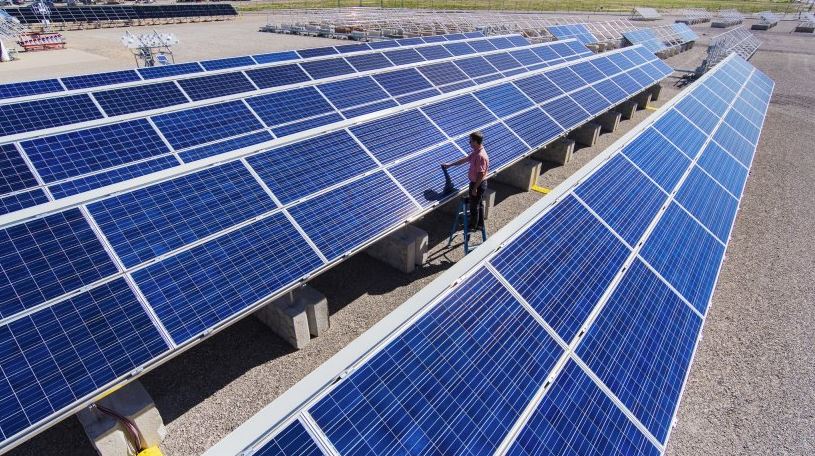
Feed-in tariffs, a key factor in promoting solar adoption, have incentivised homeowners to install solar panels. By selling excess solar energy back to the grid, homeowners can offset their energy costs and make a profit. This has triggered a proliferation of rooftop solar installations across urban and rural homes in Australia.
The rise of solar energy has disrupted traditional, centralised power generation models. One innovative approach to harnessing this distributed power generation is through Virtual Power Plants (VPPs). VPPs connect decentralised energy resources, including residential and commercial solar panel installations and energy storage systems, such as home batteries. These connected entities can then be controlled as a flexible power plant.
South Australia has been at the forefront of implementing this concept. In collaboration with Tesla, the South Australian government launched one of the world’s largest VPP projects. The project links tens of thousands of solar-powered homes, each equipped with a Tesla Powerwall battery, forming a 250 MW/650 MWh distributed power plant. This VPP effectively stabilises the grid, decreases energy costs, and provides a cleaner, more resilient energy system.
Moreover, the rapid adoption of solar power in Australia contributes significantly to reducing greenhouse gas emissions. Solar power systems with minimal operational emissions are a cleaner alternative to fossil fuel-based energy generation. Solar energy reduces the environmental impact of energy production by curbing CO2 emissions, one of the main culprits behind global warming and climate change.
As a country with one of the highest per capita carbon dioxide emissions in the world, Australia has an essential role in global climate mitigation efforts. Thus, the solar boom is changing the dynamics of the country’s energy market and helping Australia achieve its commitments under international agreements like the Paris Agreement.
Australia’s renewable energy targets have been crucial in stimulating the growth of the solar energy sector. The Australian government has set a Renewable Energy Target (RET) scheme to generate 33,000 GWh of additional renewable energy by 2020. Although the RET scheme no longer accepts new applications, it has successfully driven the investment and installation of renewable energy projects, especially solar energy.
While Australia has significantly surpassed this target, it must continue its efforts to transition towards a more sustainable, low-carbon future. Solar energy, with its multiple benefits and potential, is set to play a pivotal role in this journey.
The rising solar electricity trend has also spurred the growth of various ancillary sectors, such as battery storage, smart grid technology, and energy management software. It’s driving innovation, creating jobs, and providing economic benefits. However, to fully leverage these opportunities, addressing challenges such as grid stability, energy equity, and effective integration of renewable resources into the power system is essential.
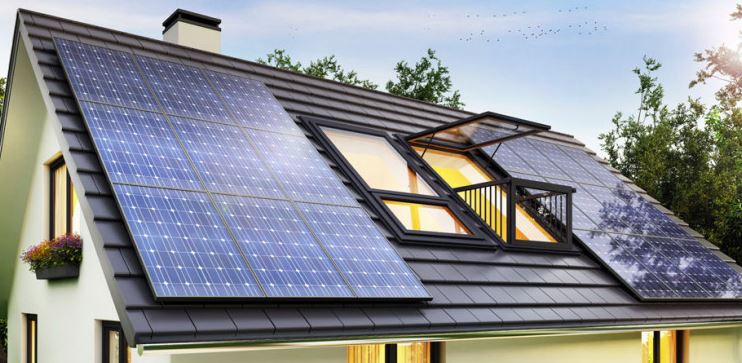
Australia’s solar boom showcases the immense potential of harnessing renewable energy sources for a sustainable future. As the sun continues to shine bright down under, the future of Australia’s energy market is looking equally bright, thanks to solar electricity. The decentralisation of power generation, reduction in greenhouse gas emissions, and the disruption of traditional energy sources prove that Australia is well on its way to a clean, sustainable, and resilient energy future.
In conclusion, solar electricity is not merely an alternative form of energy; it’s a powerful tool to reshape our world. As the Australian case demonstrates, embracing solar energy can significantly change how we produce and consume energy, sparking a revolution that stretches beyond national borders. This ‘solar boom’ should inspire other countries to follow suit, explore their renewable energy potential, and harness the sun’s power to light up our shared future.
Solar Power Maintenance and Repairs: How Solar Electricians Keep Your System Running Smoothly
Solar energy is a renewable and environmentally-friendly alternative to traditional power sources. Its increasing adoption in homes and businesses worldwide demonstrates a promising trend towards sustainable energy.
However, paying heed to regular maintenance and timely repairs is essential to ensure a solar power system’s optimal functioning and efficiency. This is where proficiency and skillset of solar electricians become crucial.
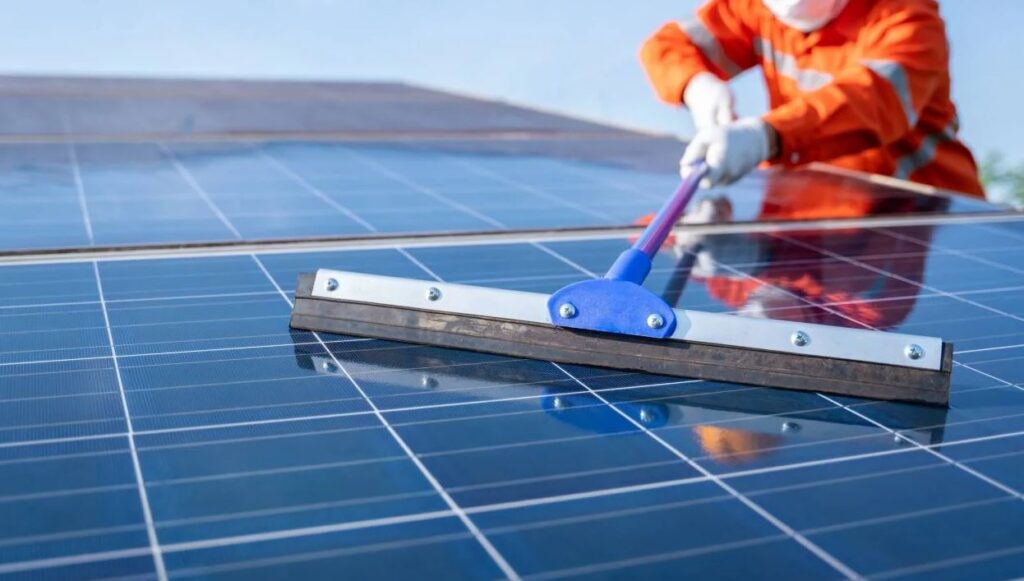
Solar electricians are the unsung heroes of the renewable energy sector. They install solar power systems and undertake the crucial role of maintaining them. This blog post underscores solar electricians’ critical services, showcasing the importance of regular maintenance and prompt repairs for keeping solar power systems at peak performance.
Regular Maintenance Services
Regular maintenance ensures that your solar power system consistently produces the maximum energy. Offering a broad spectrum of maintenance services, solar electricians play an essential role in safeguarding your system’s health and extending its lifespan.
- Panel Cleaning: Over time, dust, bird droppings, leaves, and other debris can accumulate on your solar panels, significantly reducing their efficiency. Solar electricians provide thorough panel cleaning services, ensuring your panels remain clear and free to absorb as much sunlight as possible.
- Inspection of Connections: The robustness of the electrical connections in your solar power system is crucial to its overall performance. Loose, corroded, or damaged connections can lead to inefficient energy production and potentially hazardous situations. Regular inspections by a solar electrician can identify and address these issues before they escalate.
- Performance Monitoring: Solar electricians use specialized equipment and software to monitor the performance of your solar power system. This involves checking for any abnormalities or fluctuations in energy production, which could indicate potential problems. Regular performance monitoring allows for early detection of issues, ensuring they are addressed promptly to avoid significant energy loss.
Identifying and Addressing Issues Promptly
Spotting potential issues before they become problematic is crucial to a solar electrician’s job. Some problems might not immediately impact energy production, but if left unattended, they could lead to system-wide failures and costly repairs down the line.
What might appear as a minor crack on a solar panel can, over time, lead to serious problems by allowing moisture to penetrate and harm the internal wiring. Experts like Pro Electrician Sydney understand the importance of addressing issues promptly, even if they initially seem insignificant.
Troubleshooting and Repair Services
Despite regular maintenance, problems can sometimes occur in solar power systems. When this happens, solar electricians provide essential troubleshooting and repair services.
- Diagnosing Faults: The first step to fixing a problem is understanding what’s wrong. Solar electricians deploy their know-how and specialized diagnostic tools to pinpoint the primary source of problems. Whether it’s an underperforming panel, a faulty inverter, or a malfunctioning charge controller, they can pinpoint the problem and formulate a solution.
- Replacing Faulty Components: If a component of your solar power system is found to be faulty, a solar electrician can replace it safely and efficiently. They understand the complexity of these systems and can ensure that the replacement is carried out correctly without causing further damage.
- Optimizing System Performance: A solar power system is more than the sum of its parts, and everything must work harmoniously for the system to function optimally. Solar electricians can identify areas for improvement and make adjustments to optimize the overall performance of your system.
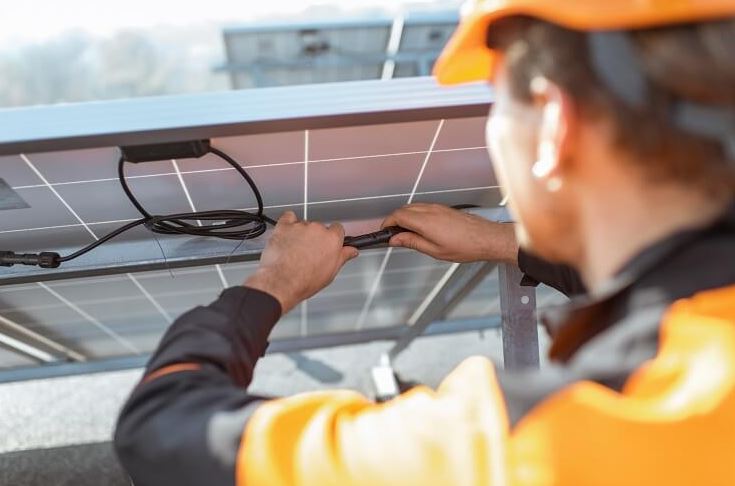
To conclude, solar electricians are invaluable assets in the realm of renewable energy. They ensure the smooth functioning of solar power systems through regular maintenance and provide necessary repairs and optimization to maintain energy production at peak levels.
Relying on their services is an investment in the longevity and efficiency of your solar power system. Remember, a well-maintained solar power system is a step toward a greener and more sustainable future. And solar electricians are the professionals that help make that future possible.
Maximize Your Heat Pump Energy-Saving Potential
You may wonder how a heat pump saves energy. Thankfully, there are a few ways to increase your heat pump’s efficiency. These are seasonal energy efficiency ratio (SEER) ratings and heating seasonal performance factor (HSPF). In general, a higher SEER rating indicates a better unit. The higher the SEER, the less you’ll have to spend on cooling. Likewise, higher HSPF ratings mean you’ll save money on heating costs.

One of the main benefits of heat pumps, like the EvoHeat 270, is their efficiency. Even if the temperature outside is below freezing, there is still heat in the air. Heat pumps condensate a liquid refrigerant by absorbing moisture from the air and then condensing it. Once heated, the water vapour moves into the indoor heat exchanger, where it warms the air inside the building. This process continues throughout the cycle.
The first step in installing a heat pump is assessing the cost and efficiency of your existing heating system. Find out what heat pumps are available in your area by contacting your electricity provider. Ask about their energy efficiency ratings, and consult with an energy advisor or contractor. You can use these to determine how much you’ll save. Speak to an energy advisor or contractor if you aren’t sure whether or not a heat pump is right for you.
Efficiency
One way to maximize heat pump energy efficiency is to set the thermostat for your boiler to a lower setting. You can also close radiators and dampers to further reduce energy costs. And don’t forget to learn about the various configurations and solutions that are available. Investing in a heat pump is well worth it. The savings are significant.
Heat pumps are efficient because they don’t use fuel to produce heat. That means you don’t have to buy a separate furnace and A/C systems. Furthermore, heat pumps do not require separate air ducts, so they are more environmentally friendly than other types of heating and cooling systems. They’re great for moderate climates. They’re also highly effective in a single home, so you’ll have one system that will do both for you.
Cost Saving
Heating costs are notoriously difficult to predict, especially during the winter, because they fluctuate year-round. Although heat pumps have a longer payback period, overall, they can save you money in the long run. Heat pumps will also eliminate the need to refill fuel tanks and can help you cut your energy bill by as much as 30 per cent. Then, you’ll have a lower monthly electric bill every month. But the downside is that you’ll still be paying a monthly electricity bill for the power you use throughout the day, especially during storms and high usage times.

Another way heat pumps save energy is by providing cooling during the summer months. They can also offset the main heating system in many cases. Moreover, you can even find ENERGY STAR certified heat pumps that provide heating and cooling. If you’re interested in learning more about heat pumps, read on to learn more about these smart appliances. Just don’t forget to read these important tips. You’ll be glad you did.
Heat pumps can also save energy by circulating warm air throughout the house. Even in the coldest winter months, your body still retains heat energy. By installing a heat pump instead of heating, you will save money on your heating bill as well as electricity. You’ll find that the savings from a heat pump can be quite substantial. So, if you’re wondering how a heat pump saves energy, read on!
Heat pumps save energy by transferring thermal energy from one place to another. Heat pumps transfer three to four times more thermal energy than electricity compared to conventional heating systems. And modern heat pumps can do this in reverse, letting you switch from one type of heating system to another without sacrificing the other. The heat pump can even act as an air conditioner in reverse! Its efficiency is a major benefit of heat pumps, and we’re happy to tell you that they save energy every time we use them.
How To Increase Solar Panel Efficiency
Solar energy is now one of the cheapest and most efficient forms of alternative energy, using nothing more than the sun to power many devices. Many people today are finding it easier to do solar panel installation because it is now much easier to find instructions online. Once you know how to install your solar panels, the learning curve should be relatively simple. But solar panel efficiency can vary depending upon several factors and knowing how to effectively conserve electrical energy can help ensure that you maximize panel performance and reduce your energy costs. Learning how to increase solar panel efficiency over time will also help you better understand how your panels perform under different conditions and in the long term.
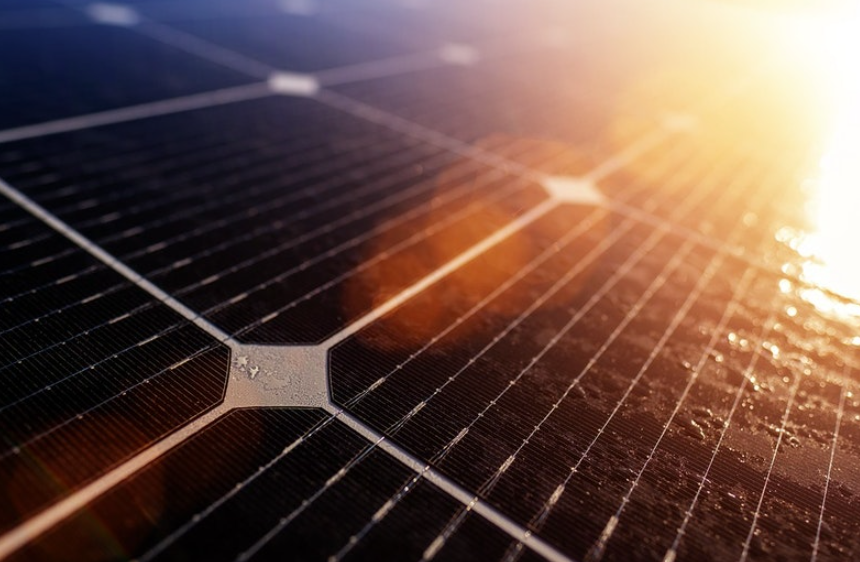
Solar power is one of Earth’s most efficient energy sources, converting sunlight into electricity with little to no energy loss over time. Sunlight is a valuable, non-depreciable source that can be found almost anywhere. In addition, solar cells can operate at night, on cloudy days, and during extended periods when the weather is cloudy or overcast.
Shade
The shading that often comes with cloudy or overcast days can reduce solar panel efficiency. Since the solar cells are not directly exposed to the sun, there is less of an opportunity for them to be able to absorb solar energy. Over time, these panels can become less efficient, even if they remain in the direct path of the sun. Shading can affect the efficiency of different types of panels. For example, the type of silicon used in solar cells can be affected by shading.
Shade also affects the thermal resistance of a panel. When daytime temperatures are extremely hot, many solar panels do not work as well as they should. This is because the solar cells are working harder to maintain their temperature, which in turn causes them to overheat. However, when daytime temperatures are cold, they do not have to work as hard to maintain their temperature, which means they can work more efficiently. Therefore, high-efficiency panels can help to conserve energy when there are high temperatures, which can result in savings on electricity costs.
Other Factors
Several environmental factors can affect panel performance, but one of the biggest factors affecting it is sunlight. The amount of sunlight a panel receives can affect its efficiency. The longer wavelengths of sunlight, such as the light given off by the sun, have a greater amount of energy that can be stored in the photovoltaic solar panels. Shorter wavelengths, such as those given off by the moon, have a smaller amount of energy but are much easier to convert into electrical energy.
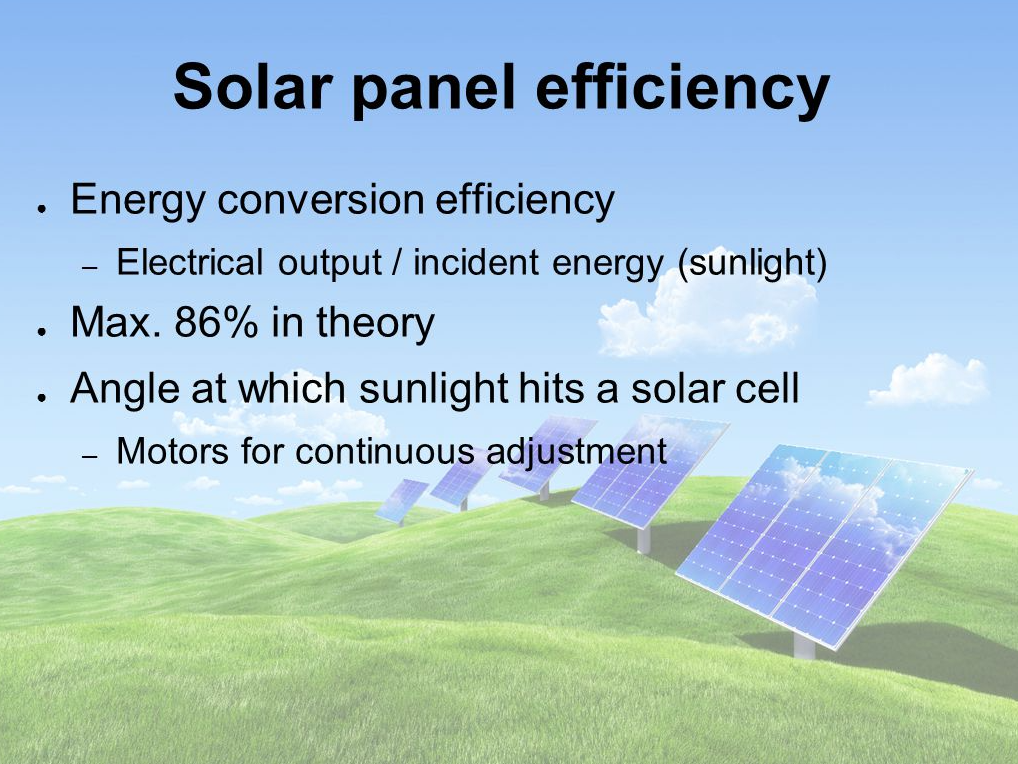
A major factor in determining solar panel efficiency is the efficiency of its converting of the available energy into electrical energy. The energy conversion efficiency of a panel can be improved by varying the size of its solar cells. Typically, the larger the cell, the higher the efficiency. Larger solar cells also have a higher surface area, which allows heat to be dissipated more quickly.
Conclusion
Knowing how to increase solar panel efficiency is very important for anyone interested in saving money on electricity bills and protecting the environment. Solar panel efficiency can be improved by purchasing products with higher efficiency ratings. While these products can be expensive, they are an effective way to greatly improve the energy conversion rates of a solar panel. Additionally, these products can be found at a wide variety of retailers and online. Knowing how to identify high-quality products will help ensure that the investment made is a good one, which will be worth it in the long run.
Knowing how to increase the power output of solar panels is very useful for anyone interested in using alternative energy sources to help save money on the overall electricity bill. It is especially important for those who live in areas where high temperatures are a daily occurrence, but they still want to use energy from alternative energy sources. In these cases, understanding how to increase the energy conversion efficiency of a panel is vital for avoiding high temperatures. Additionally, these panels are extremely easy to install and can even be built by someone with little to no experience.
Cleaning Solar Panels the Right Way
It is a common question, how to clean solar panels? Solar panels do not have to be cleaned at all, but just being cleaned periodically can help improve their efficiency. And even if you live in a region where it never really rains, or in which it is particularly dusty and filthy, this impact can still be amplified. So this is a topic that deserves some exploration.

Basics
First of all, when cleaning solar panels, there are a few things to consider. For one thing, do not just run the blades away from the panel. This will lead to premature failure, and even though you may not realize it while looking at your panel, this is exactly what is happening to many of us! When you remove the binding from the panels, you essentially sever the flow of charge from the cells. When this happens, your panel will stop producing power, and you’ll need to replace it before the batteries lose their capacity.
Next, remember that washing solar panels is not just a matter of removing the dirt and dust that accumulate on the surface. Many times, the actual cause of damage is a build-up of dust and grime. So this aspect of cleaning solar panels is also important. Just use a non-abrasive brush, and gently wipe away anything that looks foreign or dirty – including any watermarks or streaks.
Of course, not all rain is bad news. Rainwater can be a good thing, as it provides a great source of water for any number of uses. So if you are going to clean your solar panels, make sure you consider this. You might even consider taking a few buckets of rainwater and splashing it on the panel to rinse off any buildup.
Cleaning Methods
Also, keep in mind that there are two types of cleaning panels – mechanical and chemical. If you’ve never cleaned your solar panels before, it may be a good idea to go with the mechanical method. Simply unscrew the panel from its box, and remove the entire assembly. To do this properly, ensure that you have a bucket underneath the panel that will catch all the drips. Additionally, some manufactures recommend that you spray silicon cleaner directly on the panels, although this is not necessary. If you find that the panels require more than a simple wipe down, you may consider using a combination of the two!

The chemical method of cleaning solar panels is probably the best way to go. Many people are surprised to learn that making your solution to clean the system isn’t nearly as difficult as they might think. This is simply because vinegar and water are the most common cleaning agents. Of course, there are many different types of granular cleaners available, so make sure you research the best ones. For those with deeper cleaning issues, it may even be advisable to purchase a professional cleaning agent for the job.
Another option when cleaning solar panels is to use a rain barrel. A rain barrel will provide a simple and effective way to help aid in keeping your system clean. While a regular rain barrel won’t be able to capture as much rain as a larger one, it will still help to provide some of the needed rainwater. One of the main reasons why cleaning solar panels become necessary in some areas is because of the amount of pollution present in some areas. A simple rain barrel can capture and save this water which can then be used for other purposes.
Hire Professionals
For those who have bigger problems, cleaning solar panels may need to include the help of a professional cleaning service. When you do find a professional who can help with the cleaning process, always keep in mind that you should only use products that are meant to be used on the particular type of panel you have. You also need to make sure that the person you hire has experience in cleaning solar panels and doesn’t have any negative things to say about the process you are going to undertake. If you keep these important details in mind, you’ll be sure to find the best professionals to help clean your panels.
Solar Battery System Buying Guide
You can draw power from your solar storage battery to operate your lights, appliances, and water heater at night, during cold days, and even during grid outages when you are left without power. The technology creating solar storage batteries is constantly improving. New materials to create the best possible battery systems. How long do solar storage batteries last? If you want to learn how solar storage batteries work, read on.

Technology
The answer depends upon how the battery is used. A high-performance battery, such as the deep cycle kind that lasts for decades, may not last as long as one of the more efficient deep discharge types. A high-performance battery, though, will operate for many years while a lower-end type may only last two or three years at most.
As you use your solar panels, the number of total hours the battery discharges per day is dependent on how much of the sun’s rays you can absorb. It also depends on how long it takes for the cells to charge fully. The number of hours your solar panels charge is called the “hours of use.” The amount of kilowatt-hours (kWh) in a rechargeable battery is equal to the sum of the times the kilowatt-hours divided by the number of hours the battery is used. Your calculator will tell you how many kWh your batteries have since it uses to multiply the number of kWh by the number of hours the battery is used.
Can you have both storage systems in one house? Yes, – you can! Some new solar home system kits include a dual battery system with an inverter built into the design. The inverter will convert the DC power from the solar panels into AC power to be used in your household. This makes it so you can have power for all of your appliances at all times.
Discharge Cycles
How long do discharge cycles last? Most batteries have a lifespan of about five years. The time it takes to get to this fifth anniversary of being charged is called the “discharge life.” Of course, how long the battery will retain its charge is influenced by how it was initially charged. Newer batteries have shorter discharge lives because they were designed specifically for quick recharging. A discharged battery that has been stored over time will lose its ability to hold a charge, so it should be replaced sooner than later.
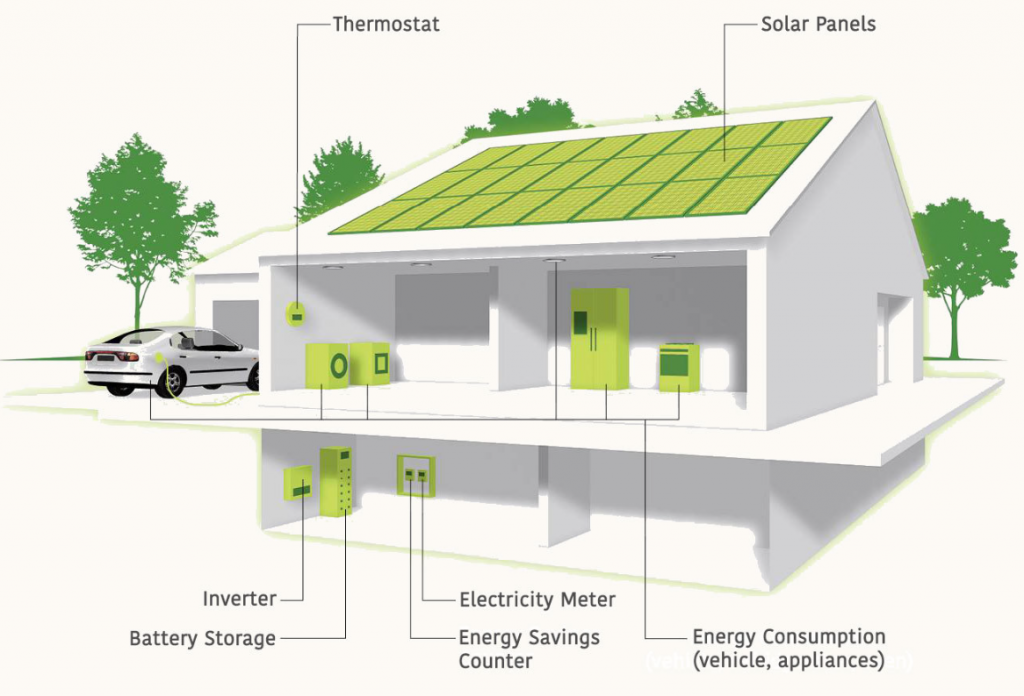
Conversion Process
How does a solar panel system convert the energy in the sun into usable electricity? Batteries are designed to store electrical power when sunlight is collected by the solar panels and then discharge this electricity when the sun goes down. In the storage phase, the batteries are charged and discharged numerous times per day. When you purchase a battery, you should see a component called the inverter.
Benefits
Why would you want to buy a backup battery for my home? Most household batteries are designed to only hold a charge for a few months. If you have a home battery system that charges your batteries when you have sun, you will never run out of storage space. On the other hand, a separate storage unit will allow you to “stock up” on power when you need it.
Do I need to know how much battery capacity each type of system holds? No – the battery capacity is typically determined on the manufacturers’ websites. Some grid-connected systems can hold up to 5 hours of charge (as long as there is no extreme weather). The more storage capacity the solar system has, the longer it will stay charged. When choosing a battery system, be sure to factor in the number of hours it will take to recover the battery’s charge, which will affect the performance and life of your solar generator.
Smoke Alarm Information
Ensuring safety in residential and commercial apartments should be a lifestyle embraced by everyone. Smoke alarms are greatly helpful in preventing a fire outbreak or hazard before the incident gets out of control. Read along to get installation and maintenance tips as well as the laws and regulations guiding the use of smoke alarms in Australia.

Tips To Smoke Alarm Installation & Maintenance
- Research & Purchase Your Smoke Alarm
Making some research about your smoke alarm before purchase would save you lots of stress. You’d agree that there are various types and brands selling today. Preferably, go for a brand that’s been tested and trusted by many.
Try going for the products that require little to zero technicality skills before installation. The level of maintenance should also be a factor when buying your smoke alarm.
- Get Smoke Alarms For Every Section
Fire ignition can happen in the most unlikely places of your home. People often believe smoke alarms installation should be for the kitchen area or garage only. While it might not feel necessary, install one smoke alarm at every level or section of your home. These sections include your attics and basement levels as well as the hallways. Of course, it’s compulsory to have one for each bedroom.
- Promptly & Carefully Install the Smoke Alarms
After purchase, get the alarms installed immediately. You don’t want to live in a home without protection of some sort against a fire hazard. During installation, make sure the alarm is placed adjacent to the ground level of your home. Ensure it’s directly in the centre of the room. Wall smoke alarms should be placed at a measurable distance from the ceiling.
- Follow the Instructions Guide & Test After
- Installation
You have the instruction manual to serve as a guide when installing your smoke detector. Carefully follow the step-by-step instructions to get the best installation possible. After a successful installation, press the test button on the alarm to carry out a live test on the device. Ensure every person in the room can hear the frequency of sound and also get familiar with the alarm.
- Carry Out Routine Power Test Monthly
With the self-test button, you can easily test your smoke detector from time to time. However, it’s advised to carry out a manual test monthly to be certain of the condition of your smoke alarms. Test the fire sensor specifically with a smoke sample close to it while you clean to ensure it’s functional. The test should be done on every detector in your home.
- Change the Battery Cells of Non-hardwired Alarms Annually
Most smoke alarms are Non-hardwired unlike the very few that require electrical connection to function. The batteries of these smoke alarms need to be checked and changed annually to ensure they don’t stop working abruptly. Get a reminder set on your mobile phone to remain prompted on the battery replacement date. Check the instructions’ guide when changing your batteries.
- Clean Your Smoke Alarms Monthly For Maintenance
Pollutants and specks of dust could potentially affect the functionality of your smoke alarms if not attended to on time. Cleaning out the exterior from accumulated dust should be done frequently. Meanwhile, the interior part of the detector is slightly protected and might need cleaning monthly. Remove the alarm from the wall or ceiling and carefully clean out the dust from the vacuum.
Smoke Alarm Laws & Regulations In Australia
The Australian Safety Department has put together a few laws and regulations guiding the use of smoke detectors in the country. Get familiar with them and ensure you adhere to obey them accordingly.
- All smoke alarm installations are required to meet the Building Code of Australia (BCA). The installation and location of the alarms in your home must also meet the standards of BCA.
- That the smoke alarms in your residence should not exceed a 10-year expiration timeframe before they are replaced. The 10-year expiration timeframe is respected globally and Australian citizens must abide by its regulations in Australia.
- Residents should connect their smoke detectors directly to the main power supply. Unless a 10-year power span battery is introduced in the nearest future, Australian citizens should only use electrical alarms in homes.
- Generally, Australian citizens are required to abide by the Australian Standards 3786:2014 guiding smoke detector usage in the country. The smoke alarms have different manufacturing details inscribed on them. Ensure you check the standards for the specified rules guiding your smoke alarm usage, maintenance, and installation.
Are You In Need of A Smoke Detector Specialist?
While installing smoke alarms could be pretty straightforward, it’s safe that you get a professional electrician to install the detectors.
At 1 Zap Electrical, they are the smoke alarm specialists and electricians who’ve helped install and maintain multiple smoke detectors in the Gold Coast region.
You may still be asking yourself “Can’t I just do this myself, Why use a master electrician?” Well for tenants it’s required to be carried out by a professional by law. Even if you own your own home, for smoke detector installation and repair services it is best to get an electrician in to ensure laws & regulations are still being followed and your safety is not at risk.

Significantly Reduce Your Power bills with Solar Technology.
Switching to solar can help you drastically cut back on power bills by up to 50%. Solar panels can be used to harness the sun’s energy that you can use to power virtually anything in your home, from the TV, the washing machine, to the HVAC system.
The best thing about solar power is that you can store power for use when the power is out or during high demand periods without causing a surge in your power bills. When you install solar panels, you split the home’s energy source between the sun and the utility company. Solar power can be used to essential power appliances in the home when the sun is out. This means you only need to use the grid in the evenings or on overcast days, resulting in substantial power savings in the long run.
Solar Power: Knowing What You Need for Your Home
The efficient use of solar power starts with knowing how much power your home uses regularly. An average house uses up 20kWh per day, which can work with a 5kW system. It is essential to get a system that can provide this amount of power. This means that it does not matter how many panels you install, but how much power your system can provide.
Clueless about how much power your home uses up in a month? Look at past power bills to get an average. You can also use an online power calculator for a more accurate estimate of your power needs depending on the home’s size, power usage habits, and other factors.
Significantly Reduce Your Power bills with Solar Technology: How to Do it.
Choose an extensive system.
First off, start with the bigger system. Solar panels are relatively cheap, which means you can work with a more extensive system for the most savings. A bigger system allows you to generate excess power to export to the grid for feed-in tariffs. A more extensive system can also work with a bigger battery, allows you to maximize your inverter’s capacity and provide the home with more power during the day, so you have less need for grid power.

Maximize power consumption during the day
As much as possible, use power during the day and limit power usage at night. Opt to run heavy appliances while on solar during the day. Limit excessive use of power at night since this power will be coming from the utility grid or your battery, which you want to keep full for most of the time.
Opt for a grid-connected system
There are benefits to an off-grid system, but if you want to save on costs and this is your first foray into solar power, start with a grid-connected system to ensure that you can get power from both sources while saving on-grid power costs. A grid connection ensures that your home stays powered even during overcast or rainy days or at night, especially if your system does not have a storage battery. You can also take advantage of power rebates.
Choose the right inverter and battery.
The general rule is that you need a 5kWh inverter for a 5kWh system, but you can work with a smaller capacity inverter since solar panels rarely deliver the maximum rated output. this advice was give by solar experts Solar Tactics based in Melbourne. A battery is also a good idea despite the cost. Having a battery can further lessen your reliance on the grid and allow you to divert excess power for storage.
A typical solar power system with a 5kWh capacity can set you back around 10k. With a 3.5k rebate, you can only expect to spend AUD 6.5k for power usage, which significantly reduces your average power usage and lower power bills in the long term. The right system can start paying for itself a year or two after installation, especially if you live in an area where there is ample sunlight all year round.
Even with the right inverter and battery and a great location with ample sunlight for most of the year, solar power won’t guarantee zero power bills from here on out. But with the right system, you can drastically reduce your reliance on the grid, lower your power bills, and generate electricity stores to tide you over during a blackout. All these are reasons enough to think about solar power for your home.
How to Find an Experienced Electrician in Brisbane Northside
If you are a homeowner in Brisbane and you want your electrician North Brisbane to work for you when it comes to your needs, you may want to consult a reliable Brisbane electrician. You should also be aware of what type of services you can expect from them and how long it will take to complete your job.
Electricians Brisbane Northside offers work for a variety of electrical systems. Some of the most common jobs they do include installation of light switches, basic electrical wiring, and repairs on faulty lights, outlets, and panels. The work done by an electrician is important for your home’s safety and security, so you should be prepared to pay for professional services.
Electricians Brisbane Northside has access to a range of electrical supplies that will allow them to get the job done quickly and accurately. These supplies include good quality batteries, switches, and power converters.
For an older home with no electrical system, hiring an electrician can be one of the most beneficial things you can do. If your home lacks the proper lighting and insulation, the electrician can provide you with LED lighting for outdoor and indoor use. They also have a selection of lights that will allow you to brighten up your yard without having to spend hundreds of dollars.
The electrical service for your home can also benefit from a power strip that can provide more than just power. Power strips can be used to plug in computers, televisions, and audio equipment without the need for adapters or cables.
Power strips also give electrical technician’s an excellent place to install lighting systems. Many of the newer units require power outlets to function. In the past, there were limited options for lights with plug-in capabilities, so now you can get the same look and feel with lights with power outlets. If you are looking for peace of mind, an electrician will be able to help you find the right power strip. He or she can help you choose between two different types of power strips: all in one system and semi-permanent power strips. Both types of power strips can be used to fit almost any application.
An all in one power strip can accommodate a variety of devices. It usually comes with an outlet, wall-mounted switches, a power adapter, and the circuit breaker that regulate current. The one that comes with the all in one system may be a little more costly but it is usually worth it in the long run.
Semi-permanent power strips are a little cheaper and are great for DIY type projects. They require a transformer, power strip, and a power cord. These power strips may not fit into the all in one system’s category, but they can be used to provide a general-purpose solution for smaller projects.
Not all power strips will fit into the category of all in one system. Depending on the size of your home, you may have some limitations. An electrician will recommend the best options for your needs based on your location and your electrical system.
When you are working with an electrician, they will usually have several suggestions for the kind of work you can expect. They will be able to recommend types of equipment for small electrical jobs, specific power tools, and general lighting solutions. They can also be consulted for finding professional electricians in your area that may not be listed on your phone book.
An electrician can be instrumental in ensuring that your electrical system is functioning properly. If you are having trouble with your system, they can make sure you don’t have any problem with your current system. Your electrical technician can also provide you with important information to help you with the planning of future maintenance for your system.